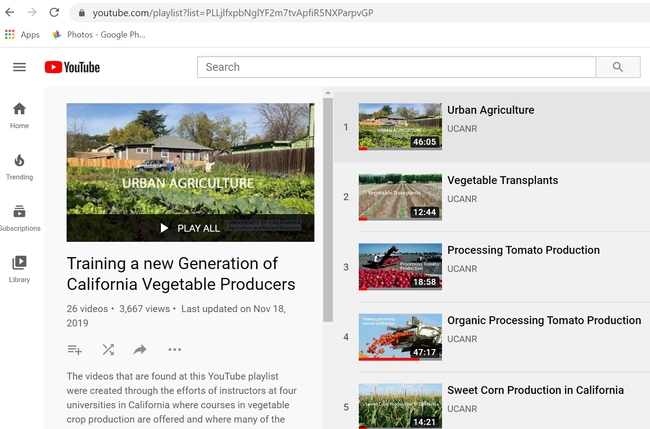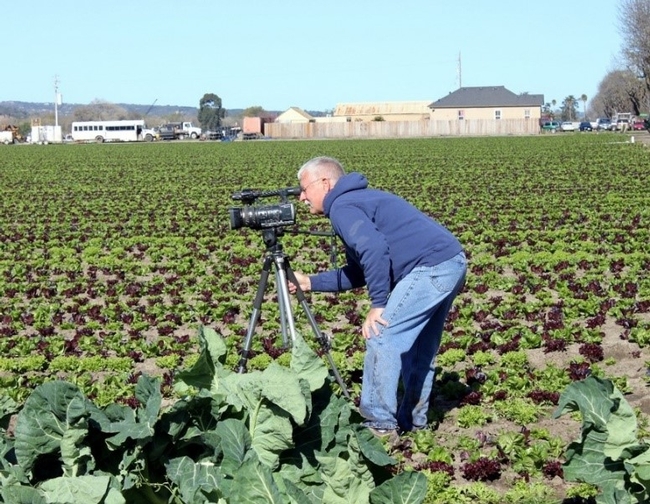Universities adopted agriculture production innovation and technology video series, contributing to workforce competency
The Issue
Projections for near-future retirements of people working in California's agricultural production, marketing and post-harvest handling sectors indicate severe re-staffing needs in the coming years. Technological advances have reduced manual labor in agriculture, but increased the need for skilled labor to maintain the sustainability of the vegetable industry. Maintaining California's leading role in producing abundant, safe vegetables is critical not only to Americans' health, but also to the state's economy.
How UC Delivers
UC ANR's Cropping Systems Cooperative Extension Specialist, Jeff Mitchell assembled a team of professors from California's public universities with agricultural programs – UC Davis, Chico State, Fresno State and CalPoly San Luis Obispo - to pull together the series of videos designed to spark the interest and begin training future farmers and agriculture workers in sound agronomic, economic and environmental stewardship skills. The team received financial support from the California Department of Food and Agriculture Specialty Crops Block Grant Program. The video series is offered on the UC Agriculture and Natural Resources (UC ANR) YouTube page on a playlist titled “Training of a New Generation of California Vegetable Producers.”
The videos depict state-of-the-art technologies and techniques that are in use in many production regions of California today, vegetable farming systems used in other parts of the world, and increasingly popular cottage farming systems that are popping up in urban areas for easy access to healthful foods. A key feature of the videos is their showcasing leading vegetable farmers and industry leaders and having them speak directly to students about their work and how they manage the complex dimensions of today's vegetable crop production systems.
“We know that maintaining California's leading role in producing abundant, safe vegetables is critical not only to Americans' health, but also to the state's economy,” UC ANR's Mitchell says. “These videos have greatly increased knowledge and awareness of production practices.”

The Impact
The video-series has been adopted by four universities, used in courses to provide real-world information on state-of-the-art production practices and technologies to over 200 students each year. Pre- and post-video viewing surveys indicate student knowledge of production innovation and technology provided by an example video on “urban agriculture” increased from 0% being very knowledgeable to extremely knowledgeable to 67% after viewing the video. Because many of today's students in agriculture-related courses do not have practical experience with crop production, the videos have provided a critically important means for learning and increasing the practical knowledge of this next generation of production workers. In addition, the video series has had broad interest beyond the classrooms. The agricultural industry, students in other parts of the United States and the world, and the broader public all have an interest in understanding how the vegetables we eat are produced at the ever-increasing scale at which they are needed. Importantly, the California Agricultural Vision statement of CDFA (https://www.cdfa.ca.gov/agvision/docs/AgVision_2017.pdf(2017) strongly recognizes the critical need to equip the next generation of workers in the field and throughout the packing and processing chain. A World Bank study (2007) determined effects of agricultural education and training on agricultural productivity, including enhanced worker productivity; increased grower abilities to choose prime combinations of inputs and outputs, and increased grower capacity to innovate and adapt new technologies. In this way, UC ANR contributes to increasing workforce competency and the public value of developing a qualified workforce in California.
